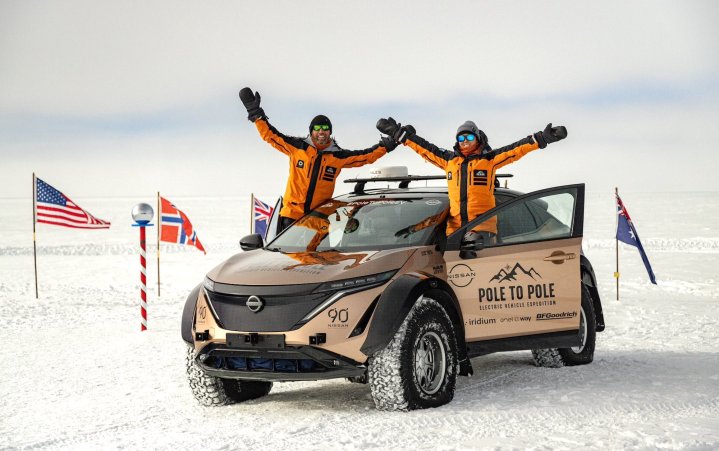
A couple from Scotland has completed an epic pole-to-pole drive in an electric vehicle (EV) in what’s believed to be a world first.
Chris and Julie Ramsey began their 18,000-mile (29,000-km) ride 10 months ago. In achieving their ambitious goal, the pair crossed 17 countries in North and South America before arriving at the South Pole in recent days.
The Nissan Ariya e-4ORCE EV that got them there was modified with larger tires to help it cope with the challenging terrain. Torrential rain, strong winds, and extreme temperatures also put the vehicle — and the couple — through their paces.
Indeed, the mammoth journey aimed to push an EV to its limit, encourage EV adoption, and demonstrate how EVs can help reduce our carbon footprint.
After reaching their destination, Chris commented: “I can’t believe we’re at the South Pole,” adding: “I’ve always had full confidence in the amazing capabilities of electric vehicles, and I knew our Nissan Ariya would tackle everything thrown at it. But it’s been far tougher than I anticipated.”
Julie said: “This has been an incredible journey, with the people we’ve met, the friends we’ve made and the support we’ve received.”
The couple charged the vehicle along the way using regular charging points. If facilities weren’t available, they turned to a 5kW wind turbine or portable solar panels.
This isn’t the first time the Ramseys have taken on a driving challenge in an EV. In 2017, they became the first to complete the arduous 10,500-mile (17,000 km) Mongol Rally in an EV, which happened to be their own Nissan Leaf.
Taking part in the Mongol Rally made them realize how such an adventure could help generate interest in EVs, and so they turned their attention to their Pole-to-Pole challenge.
The couple is set to take a break over Christmas before deciding what to do next. Whatever it is, you can be sure it will involve an electric car.


